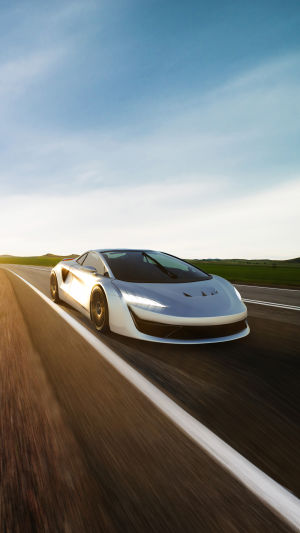Why are most luxury and sports cars designed with such low ground clearance? This question involves multiple aspects of car design, including performance, safety, and visual appeal.
Let's delve into these factors.
<b>1. Performance and Handling</b>
The low chassis design of luxury and sports cars helps enhance vehicle performance and handling.
A lower chassis reduces the car's center of gravity, improving stability during high-speed maneuvers. This stability is crucial for driver response and control in corners, reducing the risk of tilting or leaning and thereby enhancing the overall driving experience.
<b>2. Aerodynamics</b>
A lower chassis design contributes to better aerodynamic efficiency. At high speeds, a low chassis reduces airflow resistance underneath, lowering drag coefficient and improving fuel economy and speed potential. Luxury and sports cars often prioritize aerodynamics in their design, making a low chassis a common choice.
<b>3. Visual Appeal and Brand Image</b>
A low chassis design gives luxury and sports cars a more sporty and dynamic appearance, aligning with consumer expectations and preferences for these vehicle types.
This design consideration not only addresses performance but also plays a part in brand image and market competitiveness. Consumer demand for aesthetically pleasing designs also drives the popularity of this design.
<b>4. Technological Challenges and Solutions</b>
Despite its advantages, a low chassis design presents some engineering challenges.
For instance, it may increase the risk of undercarriage impacts on uneven road surfaces, necessitating effective suspension systems and undercarriage protection measures. Additionally, for electric vehicles, battery pack layout requirements may impose further constraints on chassis height.
Driving a sports car requires advanced skills and concentration. Firstly, drivers must master the car's handling characteristics, including responsive steering, precise acceleration, and braking. Sports cars typically feature powerful engines and excellent acceleration, necessitating gradual throttle application to avoid wheel slip or loss of control during acceleration. Smooth braking is equally critical to maintain control and safety.
Secondly, driving a sports car demands high levels of attention and reaction speed. Due to their tendency to operate at high speeds, drivers must remain vigilant, anticipate traffic conditions ahead and around them, and react swiftly. Particularly when navigating high-speed corners, drivers should decelerate in advance and steer timely to maintain vehicle stability and safety.
Good mental preparedness is also key to driving a sports car. It requires focused attention and patience; the thrill of driving should never compromise safety. Moreover, adherence to road traffic rules and etiquette is equally important, promoting courtesy and respect for other road users.
In conclusion, luxury and sports cars are designed with low ground clearance to enhance performance, improve aerodynamic efficiency, and project a visually dynamic image. This design not only reflects manufacturers' pursuit of driving experience but also represents a blend of technology and design. However, driving these vehicles demands advanced skills and focused attention to ensure the perfect balance of safety and driving pleasure.





